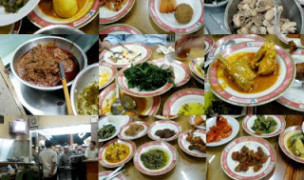 5 Terms
5 TermsHome > Industry/Domain > Inorganic chemicals > Inorganic pigments
Inorganic pigments
Industry: Inorganic chemicals
Add a new termContributors in Inorganic pigments
Inorganic pigments
Han purple
Inorganic chemicals; Inorganic pigments
Han purple (also called Chinese purple ) is asynthetic barium copper silicate pigment that was developed in China at least 2,000 years ago. Han purple was used in ancient and imperial China from the ...
Prussian blue
Inorganic chemicals; Inorganic pigments
Prussian blue is a dark blue pigment with the idealised formula Fe7(CN)18. Another name for the colour Prussian blue is Berlin blue or, in painting, Parisian blue. Turnbull's blue is the same ...
Naples yellow
Inorganic chemicals; Inorganic pigments
Naples yellow, also called antimony yellow, can range from a somewhat muted, or earthy, reddish yellow pigment to a bright light yellow, and is the chemical compound lead(II) antimonate. Its chemical ...
Purple of Cassius
Inorganic chemicals; Inorganic pigments
Purple of Cassius is a purple pigment formed by the reaction of gold salts with tin(II) chloride. It has been used to impart glass with a red coloration (see cranberry glass), as well as to determine ...
Egyptian blue
Inorganic chemicals; Inorganic pigments
Egyptian blue is chemically known as calcium copper silicate (CaCuSi4O10 or CaO·CuO·4SiO2). It is a pigment used by Egyptians for thousands of years. It is considered to be the first synthetic ...
Minium
Inorganic chemicals; Inorganic pigments
Minium is the naturally occurring form of lead tetroxide, Pb2+2Pb4+O4. It is a light to vivid red and may have brown to yellow tints. It typically occurs as scaly to earthy masses. It crystallises in ...
Paris Green
Inorganic chemicals; Inorganic pigments
Paris Green is an inorganic compound more precisely known as copper(II) acetoarsenite. It is a highly toxic emerald-green crystalline powder. It is also used as a blue colourant for fireworks. The ...


